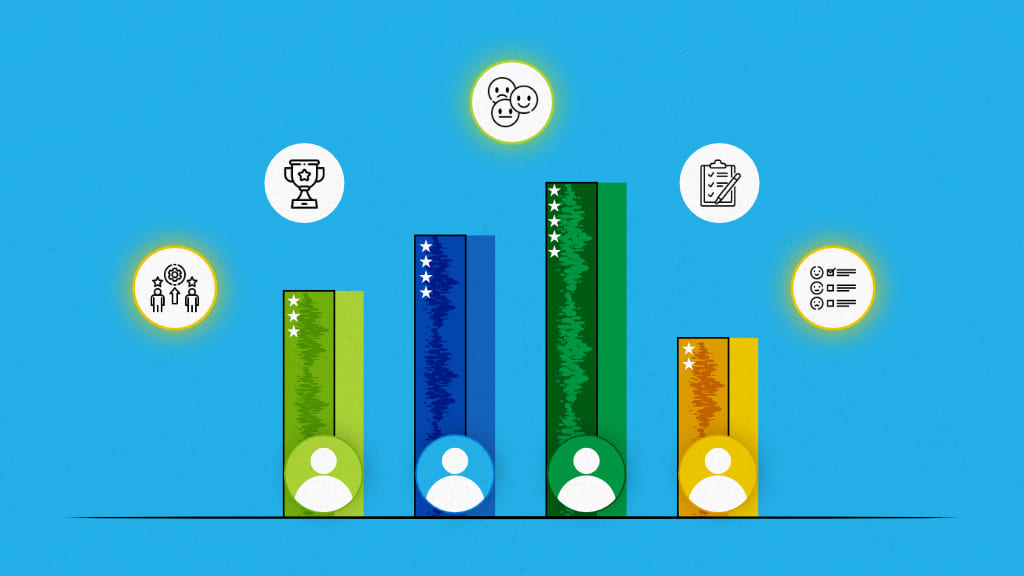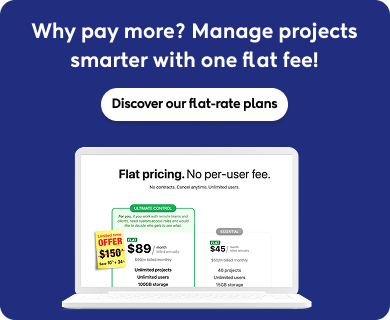Your employees are the most valuable assets of your organization. They primarily drive your business to tremendous success and overall growth.
That said, every employee cannot deliver the same level of performance as their competencies, skills, and working style differ.
This is where HR managers have their tasks cut out. They have to closely monitor the performance of every employee to identify what team members are doing quite well at work and which ones need additional training and support.
Here, it’s critical to make use of trustworthy employee performance measuring tools to identify outstanding performance and establish standards for individuals who struggle to meet expectations.
Today, we’ll take a deeper look at this crucial HR practice that has the potential to hold your business back or catapult it towards great future success.
What is Performance Measurement?
“Employee performance measurement” is a formal assessment of an individual’s work in a given time period. HR managers and senior management evaluate the individuals’ on-job performance, identify their strengths and weaknesses, give feedback and set future goals.
Why is Employee Performance Measurement Important?
I want to ask HR managers a question. Wouldn’t you like to know whether or not the people you’ve recruited are doing justice to their potential and your organization’s expectations from them?
Wouldn’t you like to categorize your employees’ performance so you can manage individuals accordingly?
I believe that every HR manager reading this article has already answered these questions in an affirmative “Yes”.
Employee performance measurement is essential not just for organizations but employees. The latter needs to have an honest assessment of their performance to understand what they are doing right and what not.
- It helps managers to understand to what extent the actual performance is getting deviated from the expected benchmark.
- Constant monitoring of employees’ performance enables leaders to identify potential future problems and take corrective measures in time.
- Understand why some of your employees are struggling to perform, and formulate new training and motivation programs to help them do better.
- Track the progress of employees and hold them accountable for their performance.
- Identify top-performing employees to recognize and reward their efforts accordingly.
- Provides clarity to employees about the expectations of the senior management and why it’s crucial to perform well for their and organizational growth.
“Monitor your employees’ performance from anywhere with ProofHub. Book your DEMO now!”
5 Common Challenges with Performance Measurement (And Potential Solutions)
Performance measurement is far from a straightforward task for business leaders and HR professionals.
Various issues arise between management and employees that affect how quickly the organization reaches its goals. Given below are some performance measurement challenges and potential solutions so HR professionals can overcome them.
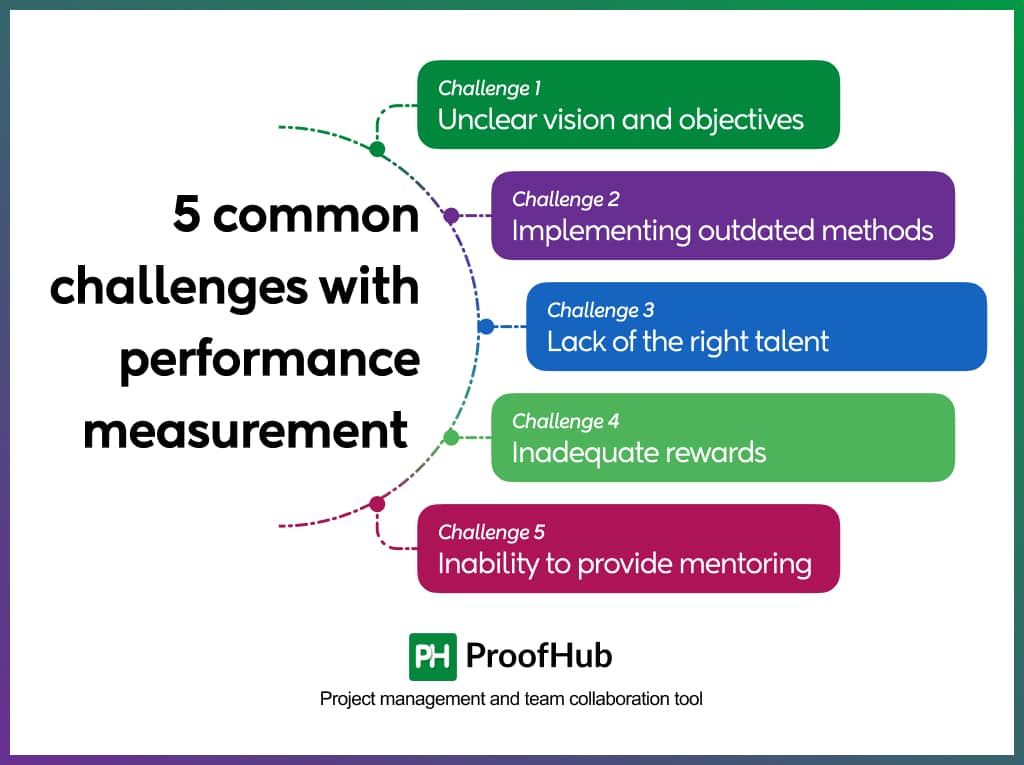
Challenge#1. Unclear vision and objectives
Lack of clear goals, vision, and objectives is the first stumbling block in HR managers’ way during performance measurement. This scenario leads to a situation where employees are not sure what is expected of them, and the organization cannot set parameters to evaluate their performance.
Potential Solution – I firmly believe that in such a situation, the onus is on the leadership to start with a clear vision, goals, and objectives. Communicate your company’s long-term and short-term objectives to employees and how each employee’s role is crucial in the process. Employees perform better when they know what is expected of them and how to achieve them.
Challenge#2. Implementing outdated performance measurement methods
In times of advancing technology, many companies still utilize traditional annual performance review methods. The problem with these seemingly outdated methods is that they are entirely data-driven and do not focus on other aspects of employee performance. In other words, employee performance is solely based on numbers.
Potential Solution – Using performance measurement tools gives more precise and detailed information on employees’ performance as HR teams have complete individual and task progress at their disposal. Also, such tools enable people to perform their work more efficiently and deliver more in less time.
Challenge#3. Lack of the right talent, skills, and resources
Most organizations face a shortage of the right talent, skills, and resources. HR teams at lesser-known brand names face this challenge mainly due to financial constraints.
Potential Solution – Startups and fast-growing companies can focus on upskilling existing employees with the help of intensive learning and development opportunities. Also, a strategic approach to hiring and resource utilization should be taken as per foremost organizational priorities.
Challenge#4. Inadequate rewards and recognition programs
Employees’ performance gets affected when there’s a lack of rewards and recognition for their hard work and honest efforts that deliver substantial value. It’s common for companies to miss out on this crucial aspect amid the hustle of managing several other things. It leads to demoralized and demotivated employees, resulting in low productivity levels.
Potential Solution – Make it your organizational priority to identify, acknowledge, and recognize employees for everything they do to carry your business forward. Good incentives for higher outcomes can lead to increased productivity. Even if your company is in the growth stage and has financial limitations, simple ‘Thank you notes and public acknowledgment can do wonders for your employees’ confidence.
Challenge#5. Inability to provide coaching and mentoring
Coaching and mentoring are essential components of employee performance measurement. The lack of these programs can make employees feel left behind by peers in terms of skills up-gradation, engagement, and productivity.
Potential Solution—While not all companies are in a position to offer coaching and mentoring support to employees, utilizing external partnerships and technology to enable personalized 1:1 meetings can be an effective option.
How to Measure Employee Performance?
For HR teams and leaders, measuring employee performance is far from straightforward because diverse roles require different performance evaluation metrics.
That said, some common practices are widely followed across various industries to gauge employee performance accurately and efficiently.
Strategies to Evaluate Employee Performance
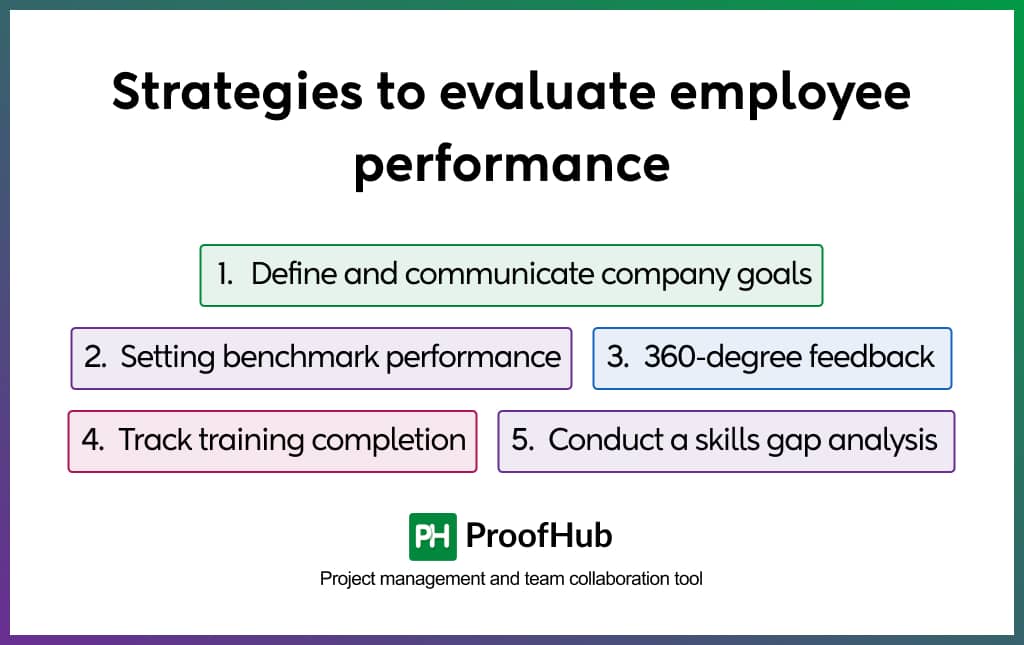
Define and communicate company goals and performance objectives
HR managers and senior leadership should clearly outline company goals and employee performance expectations. It is the first step toward creating effective performance measurement strategies. You can communicate goals through an effective collaboration tool with inbuilt communication features like Instant chat, Discussions, Real-time updates, @Mentions, etc. You can also send emails, distribute flyers, or have team or one-on-one discussions with your team members.
Setting benchmark performance by implementing ‘sprints’
Many organizations implement ‘sprint methodology’ to give their employees a clear time frame in which they have to complete assigned tasks. Sprints help to create a sort of positive time pressure on employees as they work against the clock. They can record the time they take to complete specific tasks and adjust their working style to further improve speed and efficiency. At the end of each sprint, your team members can analyze their performance and make further improvements for the next sprint.
360-degree feedback
The 360-degree feedback method provides a strong foundation for employee performance measurement. In this process, HR managers collect anonymous feedback on employees from people who work around them. HR professionals usually collect this feedback through questionnaires that include questions ranging from work performance, behavior, overall conduct, etc. Since 360-degree feedback is collected by multiple sources who know the employee well, there is hardly any scope of bias, and you get a more comprehensive view of the employee’s performance
Track training completion
Organizations these days prioritize employee training and development programs, which can be either online or onsite. As technology advances, it’s important for employees to learn and use the latest tools to be more efficient and productive at work. HR professionals should track employee training to assess the progress and improvement shown by learning team members. Additionally, undertaking such programs showcase your company as an “employee-centric” company.
Conduct a skills gap analysis
HR professionals can use an increasingly relevant tool, the skill gap analysis, to assess the gap between the actual skills of employees and the desired skills that organizations want them to have to carry out their job or perform specific tasks effectively. HR managers can identify which skills and knowledge are lacking among employees and use this information to address the skills gap through upskilling, learning and development programs, reskilling, succession planning, etc.
5 Best Employee Performance Metrics for HR Professionals
Tracking employee performance metrics contributes significantly to the overall performance of successful organizations. Since every organization is different, there is no one-size-fits-all approach to setting such metrics.
However, some general employee performance metrics are used by HR professionals across various organizations to determine what’s working well and what’s not, and whether employees’ performance is contributing to achieving business goals.
Let’s take a look at five key employee performance metrics.
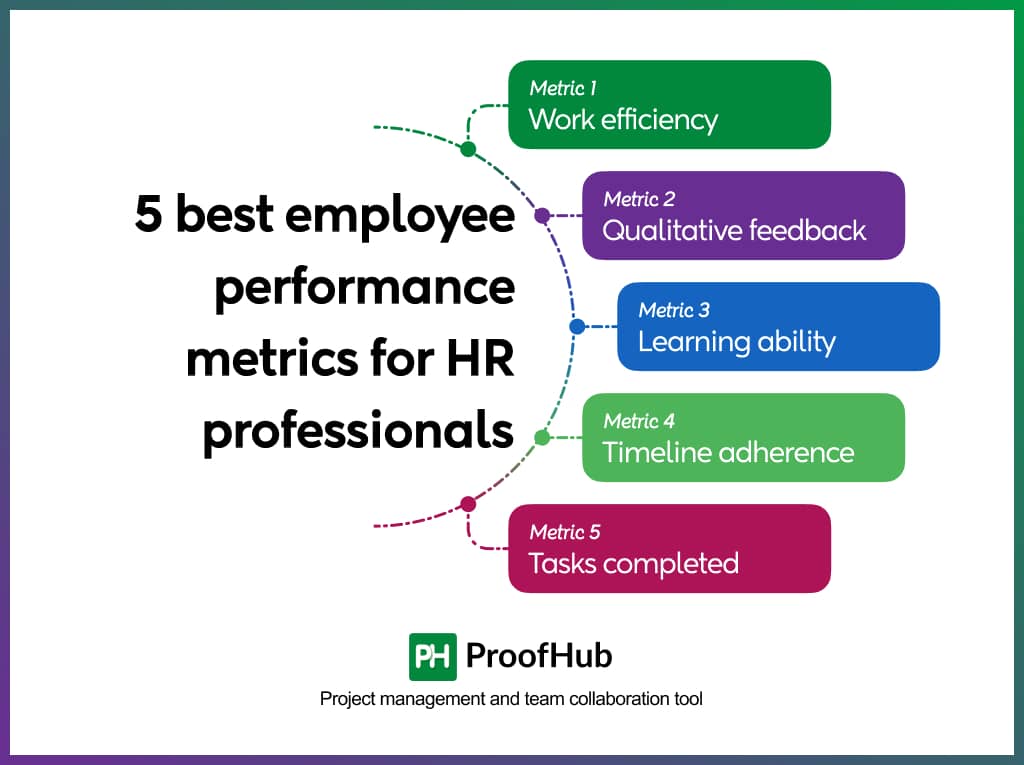
Metric 1: Work efficiency
Employee efficiency is generally measured in terms of the quality of work as compared to quantity. Generally, an employee’s overall efficiency is measured using the following methods.
- Choose the output or quantity – for example, the number of tasks completed
- Choose a measurable time frame – for example, a week or a month
- Gauge the outcome delivered within a given time period – for example, ten tasks completed in one week
- Check workplace average to have a measurable benchmark
- Divide the output by input to get a per hour figure
Metric 2: Qualitative feedback from peers
Qualitative feedback from colleagues, reporting managers, or even customers can provide a fair and unbiased insight into the employees’ performance. HR managers can use this information to have information about how employees conduct and behave in the workplace in their presence or absence. Gathering qualitative feedback is a sensitive process and should be carried out carefully and professionally.
“One tool, many functions for HR teams. Subscribe to ProofHub NOW!”
Metric 3: Learning ability
Ability to adapt and learn determines to a great extent the ability of an organization and its employees to become, and remain, relevant. To ensure this, organizations should design training programs that cater to the specific needs of their employees. The results of such learning programs should be evaluated during a performance review.
To gauge the learning abilities of employees, HR professionals should consider the following points:
- Checking low or high completion rates of online training modules and activities
- Implementation of learning into actual work and how employees have benefited from it
- Evaluation of skills before and after the training
Metric 4: Timeline adherence
Adhering to task and project deadlines is a key performance metric that helps HR professionals evaluate an employee’s efficiency at work. Adherence to timelines and good performance go hand in hand.
Here are a few critical factors to consider for HR professionals to measure an employee’s adherence to timelines:
- Maintain focus on timelines
- Consistency level in timely deliveries of assigned tasks
- Valuing one’s and other’s time
- Maintaining schedules
- Organizing and prioritizing work
Metric 5: Tasks completed
Are your employees meeting deadlines consistently? How many tasks are being completed on time, and how many missed timely completion? Were calls made to clients on time, and did they turn up for meetings well-prepared or unprepared? Every employee is different in terms of skills and competencies, so their performance varies.
Using a mobile-optimized productivity tool can help HR professionals keep track of all individuals and assigned tasks. You can check the current status of tasks and whether they were completed within set time frames or not.
How can Performance Measurement be used to Improve Organizational Performance?
Performance measurement can be used to improve organizational performance in the following ways:
- Reducing unnecessary costs for the company
- Identifying loopholes in performance and taking timely corrective action
- Aligns actual business performance with plans
- Feedback allows managers to implement best practices to improve performance
- Keeps employees accountable for their performance
- Improve employee retention rate by recognizing top performers
- Help struggling employees with learning, training, and development programs
Conclusion
When your employees are aware that their workplace conduct and performance are tracked regularly, they make adjustments to their behavior and working style.
Incorporating a useful employee performance measurement tool like ProofHub allows both HR professionals and employees to stay updated on tasks and recent developments, collaborate seamlessly with others, and organize all their work from one place.
ProofHub offers a suite of features for HR teams to manage various aspects of their work without getting overwhelmed. Whether managing in-office or remote teams, HR professionals can monitor every employee and their work status to ensure unbiased performance measurement.
